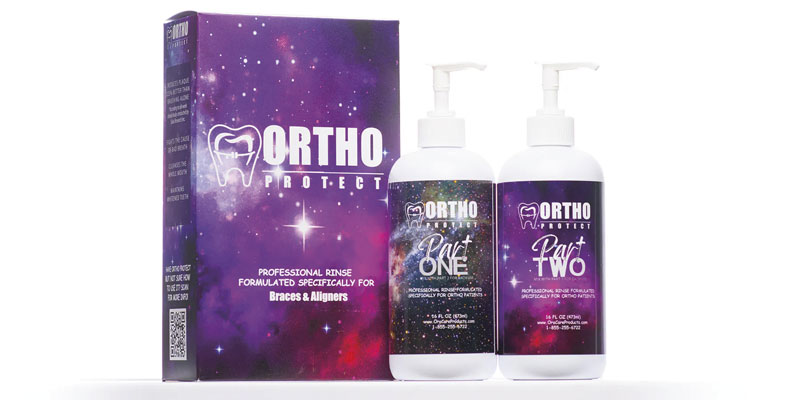How I overcame dreading patients with braces as a hygienist
Ortho Protect therapeutic rinse contains key ingredients to dissolve biofilms, strengthen enamel, reduce decay, and enhance the effectiveness. All these are integral to pediatric patient’s oral and overall health.

Kristin Sheridan, RDH, discusses a mouth rinse that promotes patients’ oral health
I used to dread the arrival of children and teenagers with braces — shorter appointment times with more work to meticulously complete around brackets and wires. Still being young, many of them have yet to develop proper hygiene habits. And how do I get them to floss when I despise threading floss through? Good hygiene is incredibly important, especially for a positive outcome with braces. If they don’t properly care for their teeth during treatment, then we know the problems like extreme decalcification and decay occur. I even see heavy plaque build-up, decalcification, and decay with kids who are using clear aligners! Since they have not developed the proper skills, even with removable appliances, the issue persists. For most patients, regardless of their skill level, a good therapeutic rinse can be super beneficial. There are a few key ingredients to look out for to help with this and improve not only orthodontic patient’s oral health but the whole child in general.
Activated chlorine dioxide: Chlorine dioxide is exceptional at dissolving even the most resilient of biofilms without being caustic or harming the oral environment. It will eliminate the bacteria that cause gum disease and decay in addition to breaking up the plaque. Long-term usage of this safe and effective treatment can help patients maintain better overall oral health.
Calcium lactate: Enamel integrity needs to be strengthened in order to prevent cavities. This component, which is a bioavailable form of calcium, effectively contributes to the remineralization of tooth enamel, helping to repair early signs of tooth decay and strengthen teeth. Furthermore, by neutralizing pH levels and buffering oral acids, calcium lactate enhances saliva’s defensive properties.
Xylitol: This ingredient is most well-known for its capacity to reduce harmful decay-causing bacteria like Streptococcus mutans. The inability of the bacteria to digest this sugar alcohol interferes with their ability to function. It also restricts bacterial adhesion, and therefore helps to reduce plaque formation. When used with calcium lactate, xylitol can further improve teeth’s remineralization, strengthening teeth’s resistance to attacks from bacteria and acids. Additionally, it stimulates increased salivation, which aids in the natural removal of food particles. Since minerals are naturally found in saliva, it helps to remineralize the teeth.
Poloxamer 407: Poloxamers enhance the effectiveness of other ingredients in solutions. They do this by reducing surface tension and increasing the “spreading and wetting properties’’ of products. This also creates a “slippery” surface that plaque has trouble building on, thereby minimizing the amount of plaque accumulation on tooth surfaces and brackets and wires.
How can we get all four of these ingredients incorporated into an orthodontic patient’s homecare? The answer is a new professional rinse, Ortho Protect.
I’ve used rinses for years to help my patients take better care of their oral health, and I have seen dramatic improvements in a really short period of time. And even though I still sometimes cringe when an orthodontic patient is on my schedule, knowing they have good hygiene habits makes it a little easier to deal with.
This information was provided by OraCare.
Read more about the importance of using mouthrinses like Ortho Protect, in “Pediatric patients may need to use rinses more than adults,” by Kristin Goodfellow, RDH. https://pediatricdentalpractice.com/pediatric-patients-may-need-to-use-rinses-more-than-adults/
